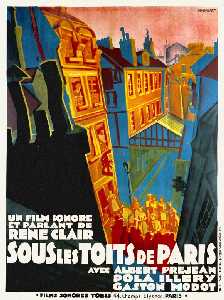 |
| Pierre Fresnay and Erich von Stroheim in Grand Illusion |
Boeldieu: Pierre Fresnay
Rauffenstein: Erich von Stroheim
Rosenthal: Marcel Dalio
Elsa: Dita Parlo
Cartier: Julien Carette
An Engineer: Gaston Modot
A Teacher: Jean Dasté
Director: Jean Renoir
Screenplay: Charles Spaak, Jean Renoir
Cinematography: Christian Matras
Production design: Eugène Lourié
Music: Joseph Kosma
I have to confess that when I first saw Grand Illusion a long, long time ago, I didn't get what the fuss was about. Why was this mildly amusing prison-escape movie considered one of the greatest films of all time? I mean, I got the general idea: That people are the same everywhere and that what divides us more than nationality is class. But where was the action? Why was there so little suspense? Why don't we get the raucous humor of Stalag 17 (Billy Wilder, 1953) or the heroics of Steve McQueen in The Great Escape (John Sturges, 1963)? All of which is to say that our expectations have been so shaped by Hollywood to the point that it's difficult for the casual filmgoer to fully appreciate the subtlety of Jean Renoir's treatment of a story about which we have so many preconceptions. The greatness of Grand Illusion consists in Renoir's understanding of people and in his cast's dedication to bringing depth to the roles they are playing. To expect Grand Illusion to give us the full Hollywood measure of laughter, thrills and tears is like expecting War and Peace to stop teaching us history and concentrate entirely on the love life of Natasha Rostova. Like a great novel, Grand Illusion is designed to be savored and reflected upon, not to be watched and swiftly forgotten. The rapport between enemies, i.e., Boeldieu and Rauffenstein, and the tension between allies, i.e., Maréchal and Rosenthal, is what the film is about, and not Boeldieu's self-sacrifice and Rauffenstein's pomposity. It's also why we don't have closure on the stories of Maréchal and Rosenthal: Do they survive the war? Does Maréchal return to Elsa? Does Rosenthal become a victim of the Nazis? It's only because they have become such real characters to us that we even feel a twinge of frustration at not knowing those things. Hence the irony of the film's title. Hollywood gave us illusions. Renoir is determined to let us see the realities behind them.


